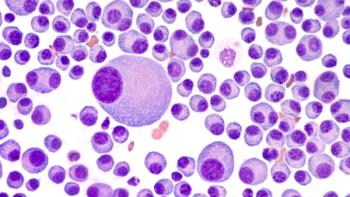
FDA Okays Maintenance Therapy for Ovarian Cancer
Olaparib tablets (Lynparza) approved as a maintenance treatment for patients with ovarian, fallopian, or primary peritoneal cancer.
Today, the FDA approved olaparib tablets (Lynparza) as a maintenance therapy for patients with recurrent epithelial ovarian, fallopian, or primary peritoneal cancer who have responded to platinum-based chemotherapy, according to a press release.
However, the FDA cautions that the tablets and capsules are not interchangeable. AstraZeneca is beginning to phase out the capsules in the United States and they will only be available through the Lynparza Specialty Pharmacy Network, according to the release.
The approval of olaparib as a maintenance therapy was based on positive findings from 2 randomized clinical trials that included patients with recurrent ovarian cancers that were sensitive to platinum-based chemotherapy.
In the SOLO-2 clinical trial, 295 patients with recurrent germline BRCA-mutated ovarian, fallopian tube, or primary peritoneal cancer were randomized 2:1 to receive olaparib tablets 300-mg twice daily or placebo, according to the release.
The investigators found that patients treated with olaparib had significantly improved progression-free survival (PFS) compared with placebo. The median PFS was 19.1 months for olaparib and 5.5 months for placebo, further demonstrating the drug’s benefit.
In Study 19, 265 patients were randomized 1:1 to receive olaparib capsules 400-mg twice daily or placebo.
The investigators found a statistically significant improvement in PFS compared with placebo. The median PFS was 8.4 months for olaparib, while it was only 4.8 months for placebo, according to the release.
The most common adverse reactions in trials were anemia, nausea, fatigue, vomiting, nasopharyngitis, diarrhea, arthralgia/myalgia, dysgeusia, headache, dyspepsia, decreased appetite, constipation, and stomatitis.
The most common reported laboratory abnormalities included decrease in hemoglobin, increase in mean corpuscular volume, decrease in lymphocytes, decrease in leukocytes, decrease in absolute neutrophil count, increase in serum creatinine, and decrease in platelets, according to the FDA.
The recommended dose of olaparib tablets for maintenance therapy is 300-mg twice daily with or without food.
The FDA previously granted olaparib tablets fast track designation for this indication.
Newsletter
Stay informed on drug updates, treatment guidelines, and pharmacy practice trends—subscribe to Pharmacy Times for weekly clinical insights.




















































































































































































































